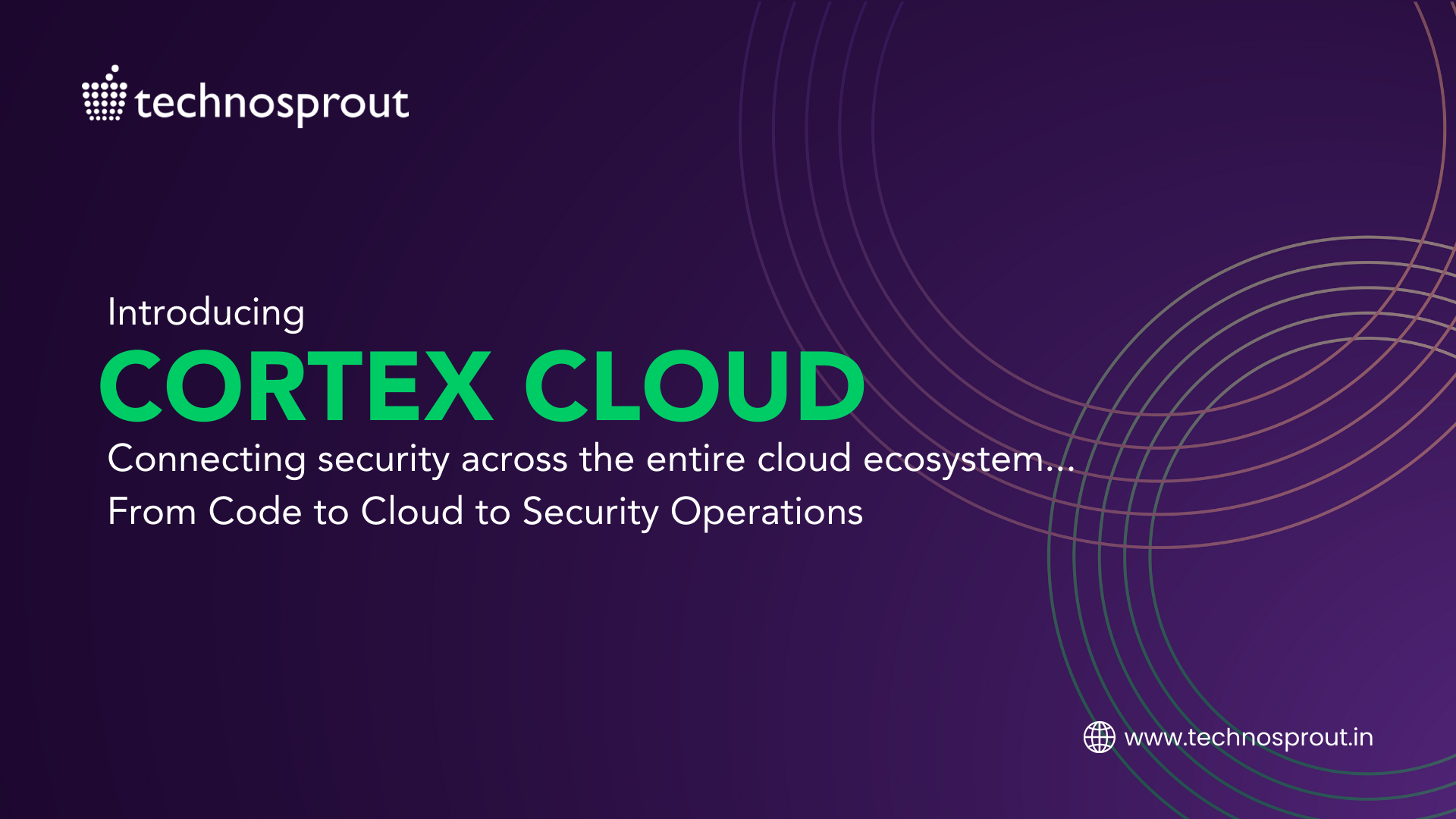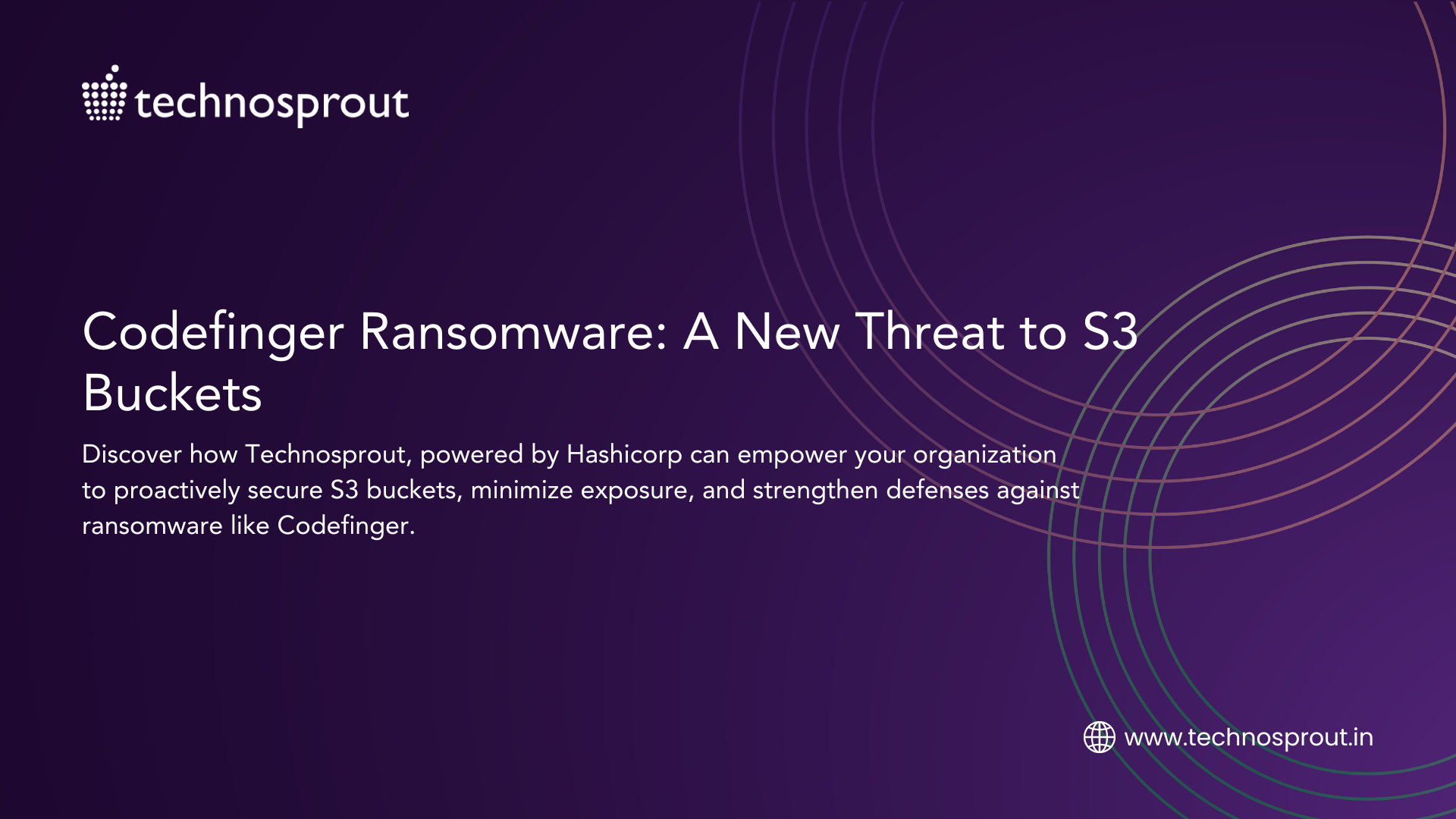In today’s digital landscape, organizations face an ever-evolving array of security threats. As businesses rely increasingly on cloud environments, microservices, and interconnected systems, vulnerabilities in these systems can expose them to significant risks. Vulnerability management, the process of identifying, assessing, and mitigating vulnerabilities, has therefore become a critical component of any robust security lifecycle.
This blog explores the importance of integrating vulnerability management into your security lifecycle and how it can help create a proactive defense mechanism to safeguard your digital assets. Towards the end, we’ll discuss how Prisma Cloud empowers organizations to streamline their vulnerability management efforts and how Technosprout’s services provide the perfect trifecta for securing your systems.
Why Is Vulnerability Management Crucial?
Every system, no matter how well-designed, is susceptible to vulnerabilities. These could stem from unpatched software, misconfigurations, outdated libraries, or even overlooked security gaps in the development lifecycle. While some vulnerabilities may only pose minimal risk, others can open doors to devastating breaches, ransomware attacks, or compliance failures.
A few compelling reasons for making vulnerability management integral to your security lifecycle include:
- Threat Landscape Evolution: Cyber threats are growing in sophistication, making it critical to identify weaknesses before they are exploited.
- Regulatory Compliance: Frameworks like GDPR, PCI DSS, and HIPAA mandate vulnerability management as part of compliance requirements.
- Minimized Downtime: Proactively addressing vulnerabilities reduces the risk of exploitation that can lead to costly downtimes.
- Reputational Protection: A well-managed security posture protects not only data but also an organization’s reputation.
Integrating Vulnerability Management into the Security Lifecycle
Embedding vulnerability management into the security lifecycle involves addressing risks at every stage—from design to decommissioning. Let’s break it down:
1. Planning and Design Stage
The journey starts with secure architecture and design. Here’s how vulnerability management plays a role:
- Threat Modeling: Assess potential attack vectors and prioritize areas needing robust controls.
- Secure Development Practices: Encourage coding standards, such as OWASP, to minimize inherent vulnerabilities.
- Policy Creation: Establish clear guidelines for vulnerability scanning and patch management.
2. Development and Testing Stage
During development, continuous scanning for vulnerabilities ensures early detection. Techniques include:
- Static Application Security Testing (SAST): Analyzing code during development to detect issues.
- Dynamic Application Security Testing (DAST): Testing running applications for vulnerabilities in real-world scenarios.
- Dependency Scanning: Identifying risks in open-source components or libraries.
Integrating these processes into CI/CD pipelines automates detection, reducing delays while ensuring security remains a priority.
3. Deployment Stage
When applications and systems move to production, vulnerabilities in configurations, cloud setups, and dependencies must be checked. Key actions include:
- Configuration Audits: Validating compliance with security benchmarks like CIS and NIST.
- Vulnerability Scanning: Regular scans to identify newly discovered weaknesses in the environment.
- Baseline Hardening: Applying least privilege principles and restricting unnecessary access.
4. Operation and Maintenance Stage
Post-deployment, the focus shifts to ongoing management and mitigation:
- Continuous Monitoring: Use tools that actively monitor vulnerabilities and provide real-time alerts.
- Patch Management: Promptly applying patches to fix known vulnerabilities in software and systems.
- Prioritization: Focus on addressing vulnerabilities with the highest risk impact first, ensuring resources are allocated effectively.
5. Decommissioning Stage
Retiring systems or applications also requires vigilance. Ensure that:
- Sensitive data is securely wiped.
- Legacy systems do not leave exploitable gaps.
- Vulnerabilities do not persist post-decommissioning.
Challenges in Vulnerability Management
Despite its importance, organizations often face hurdles in implementing effective vulnerability management. These challenges include:
- Volume of Vulnerabilities: The sheer number of vulnerabilities can be overwhelming, making it difficult to address them all.
- Contextual Prioritization: Not all vulnerabilities are equally risky; knowing which ones to focus on requires context.
- Tool Overload: Using multiple tools can create silos, leading to inefficiencies and missed threats.
- Skill Gaps: Organizations may lack the in-house expertise to effectively manage vulnerabilities.
Overcoming these challenges requires both the right approach and the right technology.
Vulnerability Management Best Practices
To ensure a streamlined and effective vulnerability management process, organizations should:
- Automate Wherever Possible: Leverage automation to scan, assess, and prioritize vulnerabilities without manual intervention.
- Use a Risk-Based Approach: Focus on vulnerabilities that pose the greatest risk to your organization.
- Foster Cross-Functional Collaboration: Involve development, operations, and security teams to align priorities and streamline workflows.
- Regularly Train Employees: Conduct training sessions to ensure your team stays updated on the latest threats and tools.
- Perform Periodic Audits: Validate the effectiveness of your vulnerability management program with regular reviews and updates.
How Prisma Cloud Helps with Vulnerability Management?
Prisma Cloud, a comprehensive cloud security platform by Palo Alto Networks, offers a powerful suite of features designed to elevate vulnerability management efforts. Its capabilities enable organizations to address vulnerabilities across multi-cloud environments with precision and efficiency.
- Integrated Vulnerability Scanning
Prisma Cloud continuously scans for vulnerabilities in your cloud assets, including virtual machines, containers, and serverless functions. It provides visibility across all layers, from the network to the application.
- Contextual Prioritization
By understanding the context of vulnerabilities—such as exploitability, asset criticality, and exposure—Prisma Cloud helps prioritize the most critical risks, ensuring efficient remediation.
- Seamless CI/CD Integration
Prisma Cloud integrates with CI/CD pipelines to detect vulnerabilities early in the development process, preventing issues from propagating into production.
- Compliance and Governance
With built-in frameworks for compliance standards like PCI DSS, GDPR, and HIPAA, Prisma Cloud ensures that vulnerability management aligns with regulatory requirements.
- Automated Remediation Guidance
Prisma Cloud provides actionable remediation insights, reducing the time and effort required to address vulnerabilities.
Why Choose Technosprout for Vulnerability Management?
Integrating a robust vulnerability management strategy requires expertise, tools, and skilled personnel. This is where Technosprout comes in.
Our services offer a three-way advantage:
- Best Understanding of Cloud Security
As experts in cloud security, we help you build a strategy that aligns with your organization’s specific needs and industry standards.
- Best Knowledge of Prisma Cloud
We ensure you derive maximum ROI from your investment in Prisma Cloud by optimizing its deployment and usage to address your vulnerability management needs.
- Best Skilled Personnel
Our team of highly skilled professionals ensures vulnerabilities are managed proactively and efficiently, minimizing risks while enhancing your overall security posture.
With Technosprout as your trusted partner, you gain the peace of mind to focus on your business while we safeguard your cloud environment.
Conclusion
Vulnerability management isn’t just a security practice—it’s a business imperative. Integrating it into your security lifecycle ensures continuous protection against ever-evolving threats while aligning with compliance requirements and industry standards.
By leveraging tools like Prisma Cloud and partnering with experts like Technosprout, organizations can transform vulnerability management from a challenge into a strategic advantage. Safeguard your digital assets and fortify your defenses today—because in cybersecurity, prevention is always better than cure.






One Response
Fantastic breakdown of why vulnerability management is crucial at every stage of the security lifecycle! I love how you highlighted the importance of integrating security from planning and design all the way through to decommissioning. Regular scanning, secure coding practices, and continuous monitoring are all essential to stay ahead of evolving cyber threats. It’s also great to see the emphasis on compliance and minimizing downtime, which can have such a big impact on businesses. This is a must-read for anyone looking to build a solid security strategy!